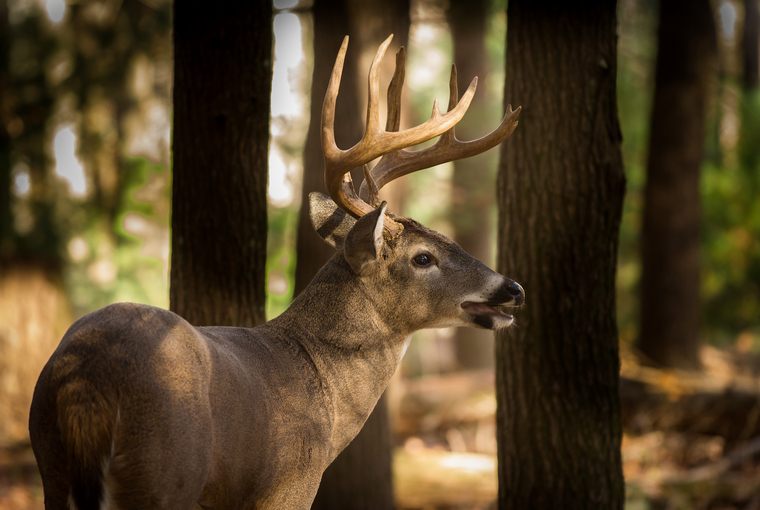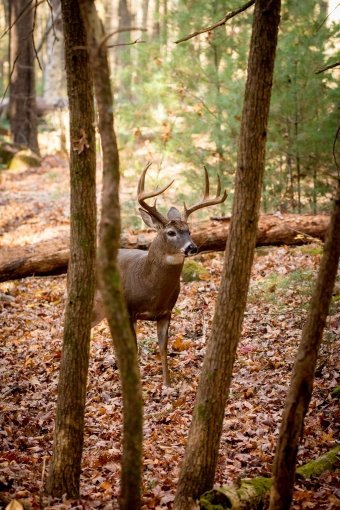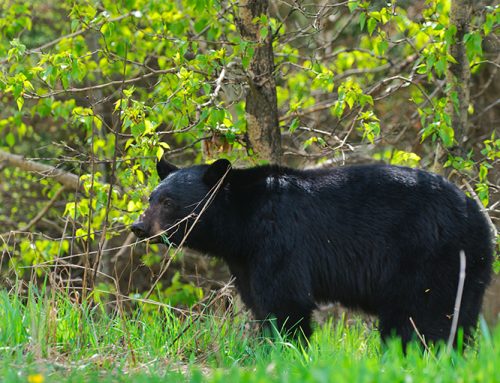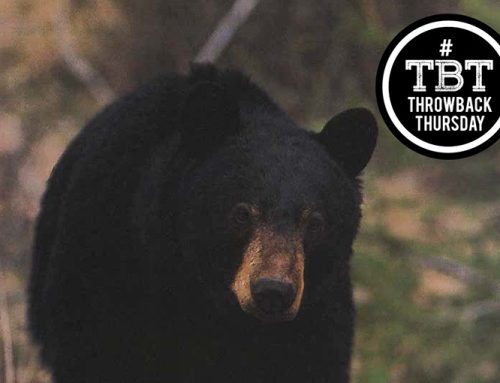
The whitetail buck is the most challenging — and occasionally infuriating — of the big game species to hunt. There are so many things to consider when trying to fool a wily old buck, and so many ways to fail. Yet, a little knowledge of how a buck works can go a long way to a successful outcome. Let’s take a look at five basic but important things to consider when you’re hunting bucks.
Scent control and wind
Perhaps the most overlooked item in the white-tailed deer hunter’s tool chest is scent control. You stink to a deer, and there is no way around it. That doesn’t mean you won’t have the occasional deer walk up in your scent, but that animal will be the exception. I can think of only one time this has happened to me, and that buck was in full rut and coming to a rattle. The ten-pointer walked up behind me in wet snow as I was looking the opposite way, with the wind in my face. I wouldn’t even have been aware of him had he not made a small snort and then tried to slink off. I caught him walking away and put a bullet in his firebox.
That buck was clearly out of his mind as there is no way he could have missed my scent. Still, that’s one story, compared with the dozens of times I’ve been winded by a buck and had a hunt end abruptly.
The simplest and best way to avoid having your scent drift past a buck’s nostrils is by paying attention to the wind. If you’re setting up a tree stand or ground blind, consider where the winds normally come from and don’t hunt from that location if the wind is at your back. A ground blind is moderately better at containing human scent, but is no substitute for being downwind. It’s heartbreaking to have a buck come in and see or hear it stop dead, stomp its front hoof, and turn tail. You’ve been busted.
Cover scents and scent-free clothing certainly help control human odours, and I use both. However, the more you can do to avoid leaving your scent around, the better. Rubber-soled boots are helpful for that, particularly around blinds and tree stands. There are also doe-in-heat scents that act as both a mask to human scent and an attractant.
Of course, smoking and eating strong-smelling food will not help your chances of killing a buck. Leave the smokes at home and choose quiet, bland foods. My dad likes to snack on figs and prunes, but they can create other problems!
Movement
White-tailed deer are in a constant state of high alert. If you’ve ever had the chance to observe these animals feeding, this will have become blatantly clear. A buck never has its head down for long, except when its nose is on the trail of a hot doe. Deer are constantly looking for any sign of danger; any flash of movement will cause them to stop what they’re doing and, as often as not, bolt. That’s why it’s so important to minimize your movement.
Anything unusual in a buck’s line of sight will be spotted. The faster the movement, the more likely he is to startle. Wearing camouflage clothing will not make much difference; the flicker of an arm or flash of a face is all a deer needs to hit the road.
The simplest thing you can do is slow your movements down and cover as much skin as possible. Since I am beard-free, I wear some kind of face covering at all times. Even if it’s just from the mouth down, it will make a difference. Always wear gloves so your hands don’t give you away. The glint off a wedding ring is bad news, too.
If a buck does spot and lock on to you, go into full statue mode. Don’t move a muscle. In time, he may just lose interest and go back to whatever he was doing. If you think this will be your only chance at a shot, lift your firearm as slowly as possible until you have a bead. You are taking a chance, but I’ve killed nice bucks with the super-slow draw. A fast movement will trigger a deer to bolt nearly every time.
Stalking
Stalking a whitetail buck is without a doubt the most satisfying type of deer hunt you can experience. It’s also easily the most difficult. All the odds are against you when you try and sneak up on a deer. You’re moving, so the chances of being seen increase a ton. You’re changing location, so the wind can shift and send your scent down to it. You’re likely going to make some noise as well, as walking in bush is tricky for humans. Despite all these obstacles, it’s possible to creep up on a buck.
Stalking is most likely to be successful during pre-rut and the peak rut, when bucks let down their guard a bit while they look for does to breed. The best thing you can do when stalking is to move slowly and stealthily, and stop often to fully take in your surroundings. Let your eyes and ears do the work. If there’s snow on the ground and you’re on a track, make sure you look ahead as much as possible and not down. Staring at tracks as you walk will almost certainly end with no deer.
A buck will watch its trail carefully and even double back. I’ve caught bucks standing and staring directly back at me on stalks. They aren’t always spooked, as bucks, in particular, are curious creatures and will occasionally want to see what’s pursuing them. This is just one of those things that can make a stalk successful — if you’re ready for the shot.
Sitting
Needless to say, sitting and waiting for a deer is the polar opposite of stalking. You can stack the “sitting” odds in your favour by choosing a spot with a favourable wind and a good view that allows you to prepare for a shot before the deer know you’re there. The term “sitting” covers a wide variety of situations and could be in a ground blind, tree stand, or just on the ground. The key thing is you aren’t moving and are watching, often for hours, sometimes for days on end, so being comfortable helps.
Many times, what has started out as a stalk for me has turned into a sit. If you find hot sign, like a fresh scrape on the ground or a pile of rubs on trees, it might be worth finding a place to sit for a few hours. Just make sure you have a variety of possible shots, should a deer present itself.
Several years ago, I came upon the intersection of two trails. A large rock was perched up above the trail, but it was surrounded by thick tag alders. I had a good view, but no clear shooting spot. So, I chose what looked to be the two most possible shots, then took out my little pack saw and cleared two shooting lanes. This took about 15 minutes, which was a gamble because last light was approaching fast and a buck could be easily spooked by my sawing. However, I cleared the lanes and then sat. After 45 minutes, with just a little light left, a 9-point buck appeared from the right and began walking the trail towards me. I had my shooting lane, but would have to squeeze the trigger the moment the buck appeared in it. My heart was racing as it approached. When the beast appeared in the opening my crosshairs found its chest and I squeezed. The buck bolted 25 yards and then was down. The sit had paid off.

Calling
Quite often, deer hunters tell me that calling bucks has not worked for them. The world of deer calling is a mysterious one, and whenever I think I’ve got it dialed in, something weird happens. I can say this for sure: if you don’t ever call, you are potentially missing out on a real opportunity to kill a big buck.
The beauty of the call is it brings deer to you, so whether you’re stalking or sitting, the call can be a potential game changer. My two favourite calls are a rather high-pitched buck grunt and a doe-bleat can.
The buck grunt is very good at getting the attention of more dominant bucks, while turning the heads of smaller ones as well. I’ve not had as much luck with deeper-toned grunts, although a true smasher would not be put off by it. There’s no need to blow the grunt tube much, just a few short blows is fine.
The doe bleat will attract all bucks, and deer in general. The strange barnyard sound is music to the ears of randy bucks that are looking for a date. A few turns of the call can are all you need. Be patient with both calls and don’t overdo them. Wait 15 to 20 minutes between calls and keep your eyes peeled. Big bucks will often sneak in quietly.
Hunting bucks is challenging and success is never guaranteed. Yet, if you follow the basics outlined here, you’ll be well on your way to filling that tag.

Senior Editor Gord Ellis is a journalist, radio broadcaster, photographer, and professional angler based in Thunder Bay. Reach Gord at: [email protected], Twitter: @GordEllis
Originally published in the July 2019 edition of Ontario OUT of DOORS magazine






Leave A Comment